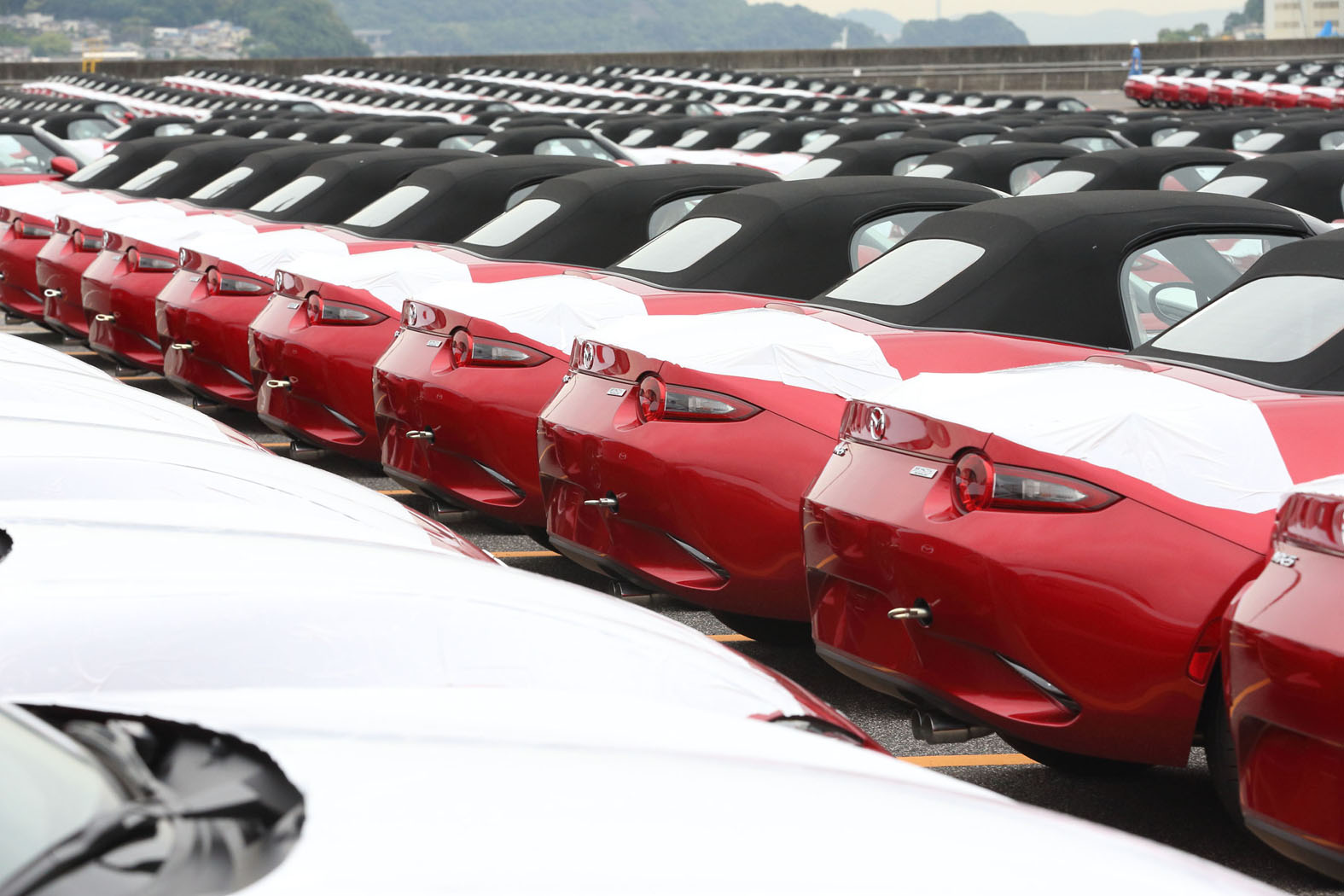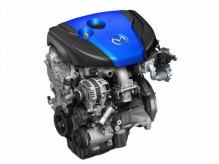Today Mazda sells its vehicles around the globe. Until recently, however, it manufactured most of them in Japan: During the 2011-12 fiscal year, “foreign” markets – from Europe and the Americas to China and Australia – made up 83% of total sales, but only 29% of all Mazdas were produced outside Japan.
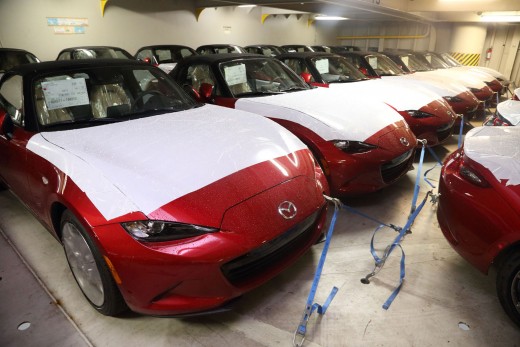
Expanding the global production footprint and accelerating cost efficiency with Mazda Monotsukuri Innovation was therefore a key component of a structural reform plan Mazda initiated in 2012 in the wake of the global financial crisis – a time characterised by declining automobile sales and a strong yen. The plan also set out to innovate the product line-up based on SKYACTIV Technology and KODO designs; yet another pillar was promoting global alliances.

Catering to global markets with international production was a logical step for a number of reasons. It puts Mazda closer to its end markets, brings favourable tariff and trade conditions in some cases, diversifies the manufacturing base, and serves as a hedge against exchange rate risks. For example, during the 2011-12 fiscal year, a ¥1 increase in the Japanese currency against the US dollar meant a ¥3.5 billion ($44.3 million / €32.1 million) drop in operating profit. For the year that ended in March 2016, the company had diminished this impact to ¥1.3 billion ($10.8 million / €9.8 million), almost two-thirds less in yen terms.
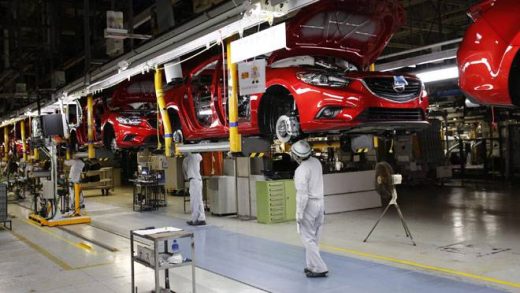
Major progress has been made in overseas production. After opening a brand-new facility in Salamanca, Mexico (Mazda de Mexico Vehicle Operation or MMVO) in 2014 and hiking capacity at its Thailand operations, non-Japanese vehicle output reached 40% of the global total last fiscal year. European imports, for instance, are now sourced from Mexico and Thailand as well as Japan.
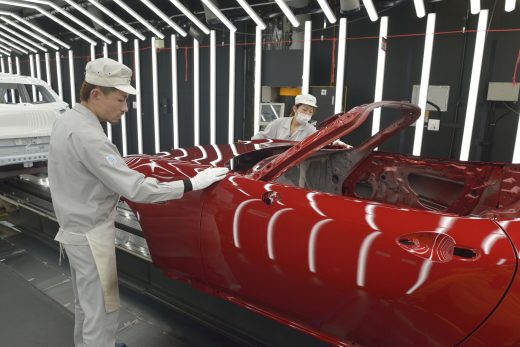
Popular cars, strong demand
Since initiating the structural reform plan, Mazda has launched a completely new model generation with great success: Each vehicle combines striking designs with outstanding performance and driving fun, top-class fuel efficiency and cutting-edge safety – for every model at an affordable price. It has also entered various agreements with other carmakers, e.g. to manufacture a roadster for Fiat-Chrysler (in Japan) and a supermini for Toyota (in Mexico).
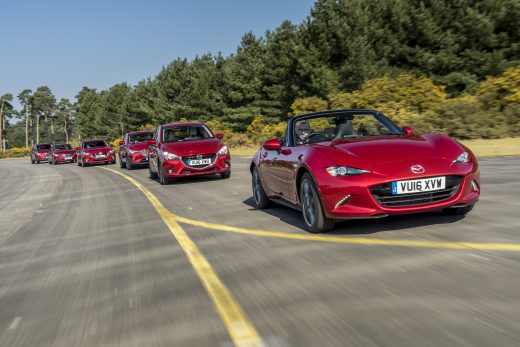
The modern and flexible new facilities give Mazda a state-of-the-art global production base with extra capacity that is vital today as strong ongoing demand for its acclaimed cars has the Japanese plants operating full-out. MMVO, capable of manufacturing 250,000 vehicles annually, currently produces the Mazda2, Mazda3 and a subcompact sedan for Toyota. Mazda Powertrain Manufacturing (Thailand) Co. (MPMT), which opened in 2015, makes engines and transmissions, while Auto Alliance (Thailand) Co. builds the Mazda2 and Mazda3 for right-hand drive markets as well as the Mazda BT-50 pickup. Mazda recently announced plans to triple engine assembly capacity at MPMT by 2018 and add a new engine machining facility. The company also produces in China, Malaysia, Russia and Vietnam.
Mazda Monotsukuri Innovation, meanwhile, is about optimising its manufacturing processes – including every component of its vehicles – to improve cost efficiency in every area, from R&D to production and more. (The term monotsukuri means “the art of making things” in Japanese.) Measures include bundling product planning to identify what elements the product line-up can and cannot share and common architectures in which each different model shares core traits and therefore the same development and production processes.
Fewer machines, lower costs
For example, engines that share combustion characteristics despite different displacements also share the calibration process, which is much less time and resource-intensive than having a separate process for each engine. Or different engine blocks with the same conveyor points and machining points, so they fit on the same machines while allowing variability in many other factors (e.g. crankshaft diameter, bore, bore pitch*). This flexibility, introduced along with its SKYACTIV engines, has enabled Mazda to cut a 45-step machining process for each different engine on a dedicated assembly line down to four steps for any engine on the same line.
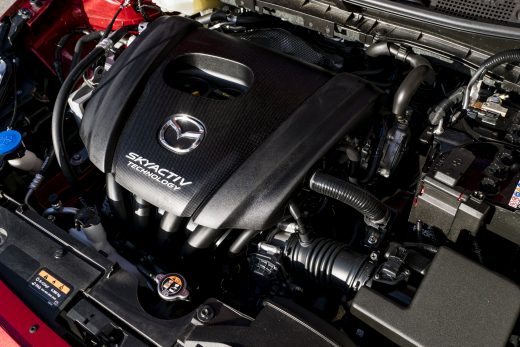
Mazda is thus able to respond quickly to changing demand and switch to new or different models with no adverse effect on costs or quality. Its common architecture even allows mixed production lines that can make a variety of products in any order – and with no downtime. Initially implemented in Japan, Mazda Monotsukuri Innovation is also being deployed abroad.
“This marked a manufacturing breakthrough for Mazda, particularly when you consider the cost advantages. In Hiroshima, for example, we were able to cut our investment in machining capacity for 1 million SKYACTIV engines by 70% compared to the previous engine generation. These kinds of savings really pay off when adding new capacity,” says Mazda Motor Europe President and CEO Jeff Guyton. “And besides enabling the company to react faster, it also reduces the economies of scale threshold to a level that enables Mazda to flourish with relatively moderate annual production of 1.5 million vehicles.”
In the next phase of structural reform, Mazda is aiming for global sales of 1.65 million units by the 2018-19 fiscal year and a return on sales of at least 7%. The carmaker already expanded its SUV line-up this year, introducing the new-generation Mazda CX-9 in North America and the all-new Mazda CX-4 in China. Mazda is also launching models in Europe including the 2017 Mazda6, 2017 Mazda3 and Mazda MX-5 RF (Retractable Fastback).
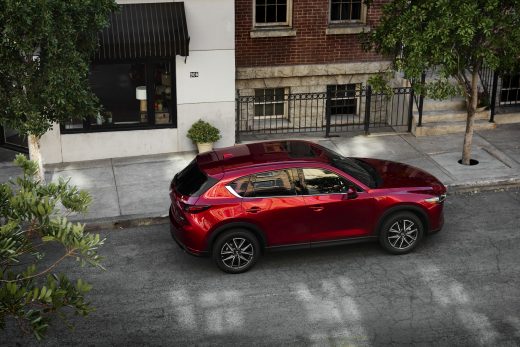
Efficiency, utilisation and SUVs
As far as global production goes, the focus now is to maximise production efficiency and utilisation at its plants to ensure Mazda has the capacity to meet its targets. Again here, Mazda is banking on the flexibility of these facilities to pick up any slack with what it calls swing production. Because the company manufactures the same products to the same quality standards around the world, it wants to be able to adjust volumes at each location on a model-by-model basis to balance worldwide production according to needs.
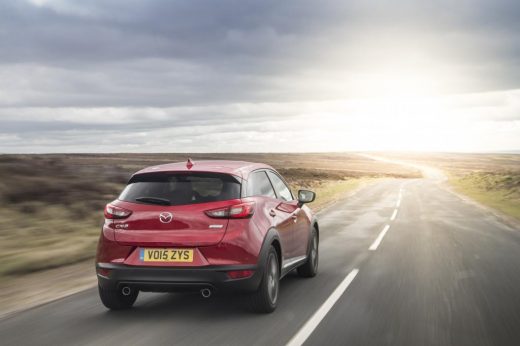
As a result, the Mazda CX-3, a B-SUV currently built at the Ujina plant in Hiroshima and in Thailand, is also slated to roll off the line in Hofu, Japan. More Mazda3 production, meanwhile, can swing from Hofu to Mexico. Forecasting that SUV sales will increase to half of its overall total, Mazda is also looking to expand capacity as needed in Thailand and Malaysia.
Beyond that, the name of the game at Mazda is stability: maintaining stable sales growth, a stable earnings structure and stable cash flow. The fact that the carmaker has become so flexible provides a solid foundation upon which to make it happen.

